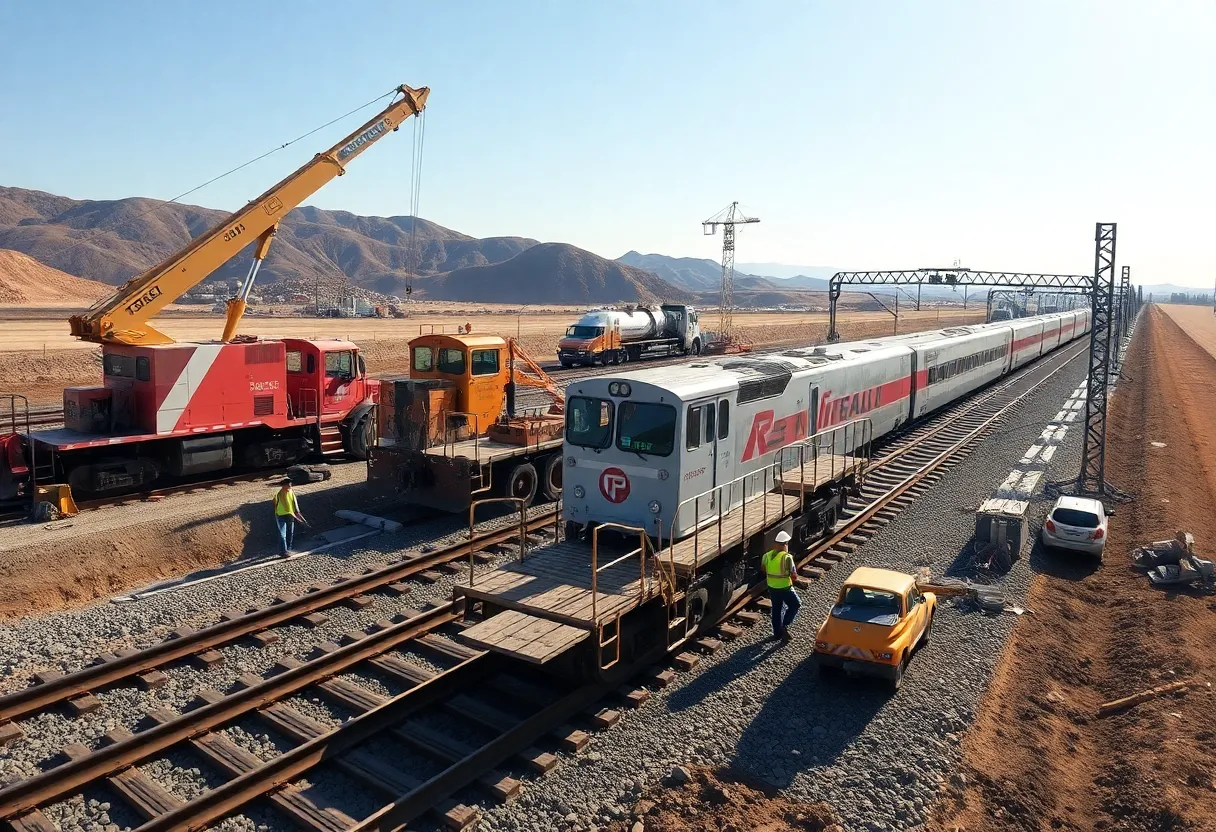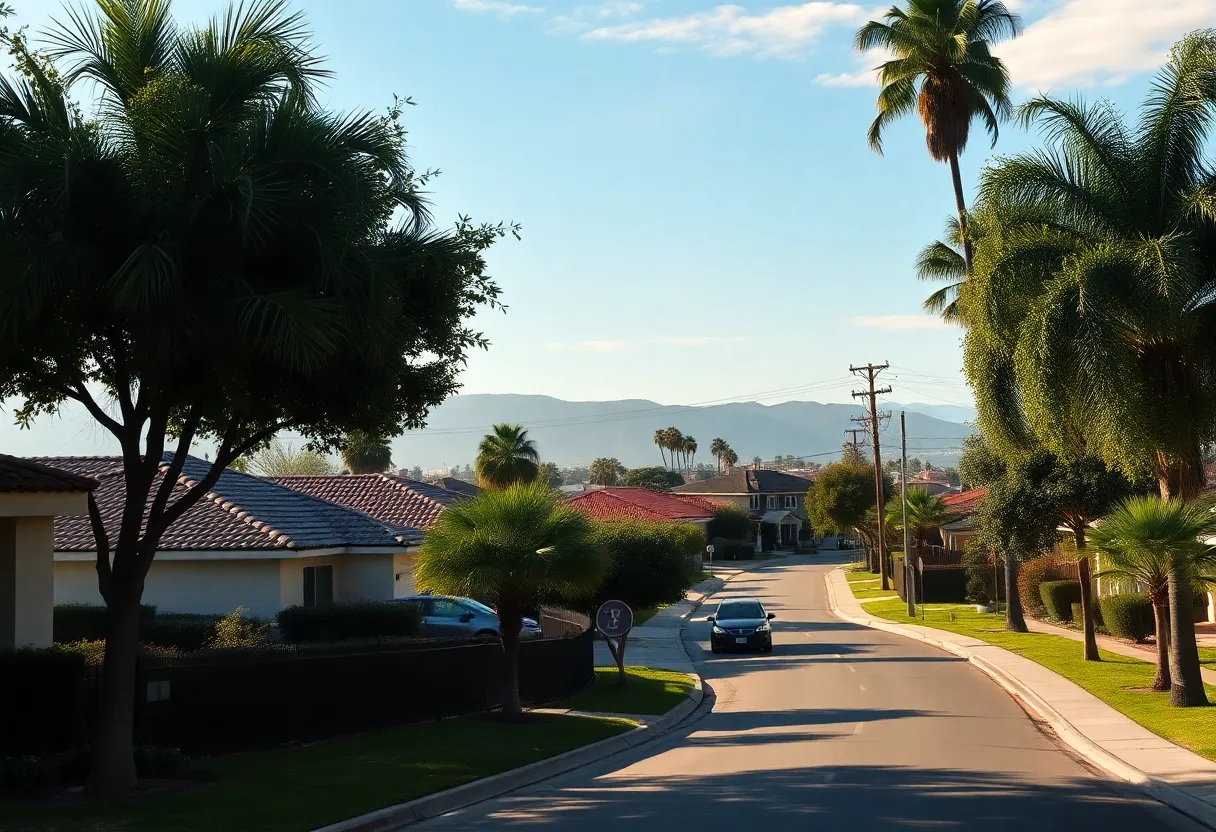California, August 26, 2025
News Summary
California’s high-speed rail project, launched in 2008 with an estimated budget of $33 billion, now faces a staggering budget increase to $128 billion. Delays continue as only a 119-mile stretch connecting Merced to Bakersfield is under construction, slated for completion by 2032. Lawmakers discuss funding measures while criticisms arise over the project’s financial sustainability. Despite hurdles, supporters believe it could create over 1 million jobs and foster economic growth and environmental benefits.
California’s high-speed rail project, initially approved in 2008 with a budget of $33 billion and an ambitious completion target of 2020, is facing a staggering budget increase estimated at $128 billion. The project, which aims to connect major Californian cities with high-speed rail, is currently experiencing significant delays, with the only active construction spanning the Central Valley region.
During a news conference held on Monday, state lawmakers and business leaders addressed the challenges and progress related to the project. Approximately $87 billion of the revised budget is earmarked for the vital segment linking Palmdale to Gilroy, which isn’t expected to be completed until 2038. Currently, one active construction site is located between Merced and Bakersfield, where plans are to connect these cities by 2032 with a stretch of 119 miles of railway.
State Senator Dave Cortese, who chairs the Senate Transportation Committee, highlighted the project’s potential for fostering economic growth and delivering environmental benefits. He noted that support for the rail project remains consistent, particularly among younger voters who see long-term value in enhanced transportation solutions.
The Senate has introduced a new bill known as SB 545 that aims to identify alternative funding sources to help mitigate the budgetary excesses facing the project. In July, the former Trump administration took a controversial step, announcing a withdrawal of $4 billion in federal funding, a move that prompted the California High-Speed Rail Authority to initiate legal proceedings to restore the lost funding.
Criticism of the project continues, with detractors such as Republican Senator Tony Strickland questioning the financial sustainability amidst these increasing costs. The former president labeled the rail initiative as a “train to nowhere,” a sentiment echoed by Transportation Secretary Sean Duffy. Despite the setbacks, the California High-Speed Rail Authority has managed to accumulate over $24 billion in funding, mainly from state sources.
The overarching vision of the high-speed rail project includes extending the train tracks across approximately 400 miles, ultimately linking San Francisco and Los Angeles. This final phase is heavily dependent on the project’s budget trajectory, which has now escalated far beyond initial expectations.
Supporters of the project advocate its potential to create over 1 million jobs and generate around $86 billion in labor income upon completion of the line connecting Los Angeles to San Francisco. They argue that the project could also stimulate residential development along the rail corridor, fostering economic ecosystems in the areas affected.
A bipartisan committee is currently investigating allegations that the California High-Speed Rail Authority misrepresented ridership projections, further complicating the project’s future. The Chief Executive of the Authority, Ian Choudri, characterized the project as being at a “crossroads,” emphasizing the necessity for long-term financial commitments to ensure its continuation and ultimate success.
Amid these challenges, Senator Cortese’s recent legislative measures focus on exploring private-public partnerships aimed at securing funding for this ambitious initiative, highlighting both the tumultuous journey of the high-speed rail project and the ongoing commitment from key state officials to see it through to fruition.
FAQ
The estimated total cost of the California high-speed rail project has risen to $128 billion.
The project aims to connect Merced to Bakersfield by 2032, with segments linking Palmdale to Gilroy anticipated to finish by 2038.
Projections suggest the project could create over 1 million jobs and generate approximately $86 billion in labor income upon completion.
Key Features of the California High-Speed Rail Project
| Feature | Description |
|---|---|
| Initial Budget | $33 billion |
| Revised Budget | $128 billion |
| Active Construction | 119 miles in Central Valley, linking Merced to Bakersfield by 2032 |
| Projected Completion Dates | Palmdale to Gilroy by 2038 |
| Job Creation | Over 1 million jobs |
| Labor Income Generation | $86 billion |
Deeper Dive: News & Info About This Topic
- CBS News: Changes to California High-Speed Rail Project
- Wikipedia: California High-Speed Rail
- Bakersfield Now: Cost and Timeline Challenges
- Google Search: California High-Speed Rail challenges
- Los Angeles Times: Lawmakers Urge Funding for High-Speed Rail
- Google Scholar: California high-speed rail economic impact
- Newsweek: High-Speed Rail Plan Through 2039
- Encyclopedia Britannica: High-Speed Rail
- NBC Bay Area: California High-Speed Rail Push
- Google News: California High-Speed Rail updates

Author: STAFF HERE CORONADO
The Coronado Staff Writer represents the experienced team at HERECoronado.com, your go-to source for actionable local news and information in Coronado, San Diego County, and beyond. Specializing in "news you can use," we cover essential topics like product reviews for personal and business needs, local business directories, politics, real estate trends, neighborhood insights, and state news affecting the area—with deep expertise drawn from years of dedicated reporting and strong community input, including local press releases and business updates. We deliver top reporting on high-value events such as the Coronado Island Film Festival, productions at Lamb’s Players Theatre, community workshops at John D. Spreckels Center, and iconic celebrations at Hotel del Coronado. Our coverage extends to key organizations like the Coronado Chamber of Commerce and Visit Coronado, plus leading businesses in hospitality, dining, and tourism that drive the local economy. As part of the broader HERE network, including HERESanDiego.com, HEREHuntingtonBeach.com, HERELongBeach.com, and HERELosAngeles.com, we provide comprehensive, credible insights into Southern California's dynamic landscape.





